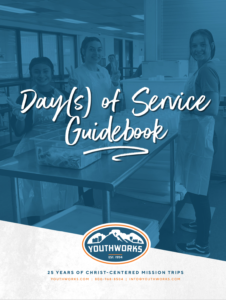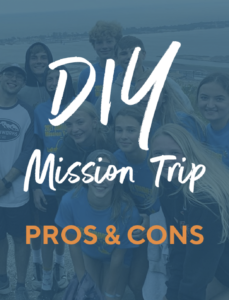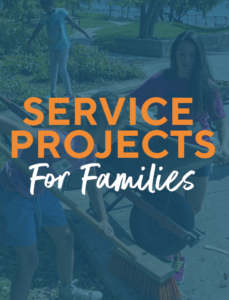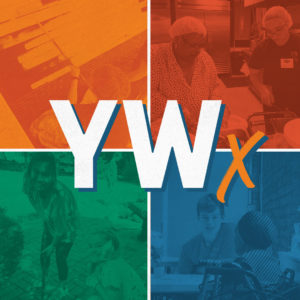COVID Impact Report
We’re incredibly thankful for this partnership with Ministry Architects, and for the 100+ youth workers, church leaders, and ministry resourcing organizations that took the time to be a part of our COVID Impact Listening Sessions.
Erica, YW’s President, and Jacob filmed this short dialogue with our Ministry Architects specialists Stephanie Caro and Toni Mosely about the final COVID Impact Report they delivered to our team. We wanted you to hear some of the trends that they discovered, ideas that came out of the process, and some encouragement as we find our way forward.
Here’s a quick recap of some key points if you don’t have time to watch the full conversation:
COVID has created a lack of institutional knowledge
Most ministries paused regular summer programming in 2020, some were able to come back in 2021, and others are still struggling to find footing for 2022. We all know how pivotal a summer experience can be for the faith and life of a teenager. But with a potential 3-year gap in regular summer programming, there are whole classes of teenagers coming into and exiting youth ministries without any of those experiences. Then, some youth ministries rotate between camps one summer and mission trips the next. That could mean a 4 or 5-year gap between mission trip experiences, which is a lifetime in youth ministry. Stephanie and Toni framed that as a “lack of institutional knowledge.”
However, that lack of institutional knowledge can be a benefit. You could translate that into the freedom to do things differently. You don’t have to do things the way you’ve always done them. You can start fresh. You can create a new vision with new priorities and new partners. You’ll have to cast the vision more than ever, and potentially work harder to get buy-in with students and families, but this ability to create something new can be a gift.
Small, medium, and large ministries seemed to have slightly different pressures
Stephanie and Toni conducted listening sessions with small, medium, and large/mega church youth workers. They noted that there seemed to be a unique correlation between the size of the ministries and the pressures they were facing.
Small church youth workers (100 or less in Sunday worship) felt the most pressure navigating financial risk associated with summer events. Many of them were hit hard by losing deposits in 2020, and they are more cautious than ever about any event-based ministry experience that could put them in a similar situation.
Large or mega church youth workers (300-2000+ in Sunday worship) are feeling pressure from parents and their bosses to “just get things back to normal.” They aren’t worried as much about financial risk, although they are certainly more aware of it after summer 2020 cancelations. But they are more concerned with the pressure they are feeling to rush their ministry back into event-based experiences when they personally aren’t ready, or when they feel it would risk the safety of their students and volunteers.
Medium church youth workers (101 to 299 in Sunday worship) are feeling it all. They feel the financial pressure like the smaller churches and the pressure from parents or their bosses to rush things back to normal.
For our YouthWorks team, we saw this range of pressures as a sign that youth workers need us to think creatively about support for them through payment plans, cost ranges, schedule flexibility, experience customization, and more. We’ve adapted agility as a strength in this season so that we can show up in whatever way a youth worker might need.
If you’re overwhelmed and frustrated, you’re not alone
Stephanie and Toni reiterated how youth workers described the heaviness of the last 2-years. We’ve seen it too. More often than not, our team spends half of a phone call pastoring and praying for a youth worker before we talk about mission trips. So many youth workers are exhausted, and just need another person they trust to help them process. While we’re grateful to be that for our youth workers, we can’t help but think about how many others don’t have that support.
If that’s you, know that you’re not alone. Seek out a youth ministry network near you. Call your denominational office. Find someone you can trust. You shouldn’t, and can’t, make it through this alone.
RESOURCES
Given what we’ve learned from our partnership with Ministry Architects, we’ve pulled out some resources that can be a great support to youth workers navigating a new way forward.
PLANNING LOCAL DAY(S) OF SERVICE
You don’t have to go anywhere to make a difference. This guidebook will help you organize a local day or week of service.
BUDGET TOOL - MISSION TRIP PLANNING GUIDE
The budget tool in this Mission Trip Planning Guide stands out as a massive resource to youth workers who have to reimagine budgets and with a new priority on the financial risk associated with event-based ministry experiences.
DIY MISSION TRIP – Pros & Cons
With more youth workers trying to explore DIY mission trip options, this blog post will walk you through 6 critical questions that help you determine what might be best for your ministry.
SERVICE PROJECTS FOR FAMILIES
Some youth workers have taken more of a family-centric ministry approach during this season. This blog post helps you imagine some local service project ideas for families.
Custom Mission Trips
Do you need a mission trip that is flexible financially, centered around only your group, and customized to your new vision? That’s why we created custom trips. It’s all that flexibility and customization, with our support to help fill in the gaps.
YouthWorks
Top Posts
Make the Most of Your Students’ Spring Break
Mission Trip Fundraising Ideas
How to Create a Fundraising Letter
Experiences that help students grow their faith through service
Service trips in over 30 communities






